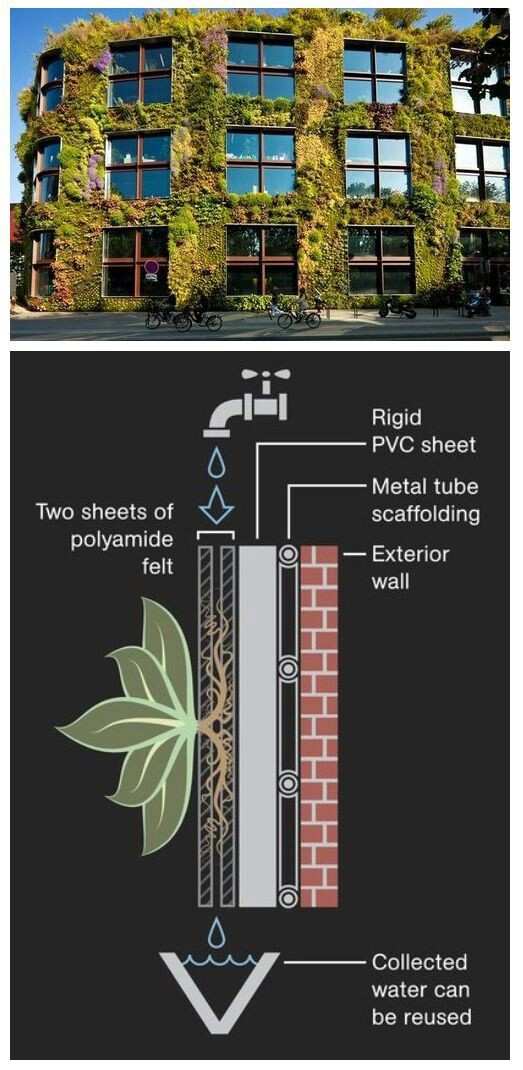Environment - Blog Posts
Let's elect politicians who could pass a high school science class

I’m re-posting this comic because I live in America.
Here, the places I love most in the world are gripped by drought. I’m thinking of giving away my winter tracking guides because there’s never enough snow. Climate change is knocking on our door, and the fact that it’s already so evident is a bad sign: it means that we’re headed for a lot more warming.
But we can deal with this, people. We’re brilliant. We’re brave. What we need - besides some kinda magical cooling ray - is a batch of elected officials who are ready to be brave alongside us.
If climate change bums you out, don’t lose heart: it means you’re strong. You’ve personally confronted a huge issue. Why let yourself be governed by scared people who can’t face it, who equivocate and attack scientists and hide their heads in the sand?
My brave dear friends: let’s get our climate vote on.
Hopefully you’ve been waiting for me to post about my progress on the Environmental Conservation course so I won’t keep you waiting any longer.
It’s going really well I’m pleased to report. The new nature reserve I’ve been surveying is providing some really positive results. It is only small...
Why We Need to Care About Insects
Originally posted on my website at https://rebeccalexa.com/why-we-need-to-care-about-insects/
Some months back a study was released that demonstrates just how damaging climate change is to insects, particularly those in tropical areas. Warming temperatures cause insects to die from overheating and dehydration, kills off their food sources, and lowers their fertility rates to dangerous levels. Moreover, changes in climate affect insect phenology, the timing of when they hatch, migrate, breed, and so forth.
And because insects are so small, they’re often disproportionately affected by many of these problems. As ectotherms, they rely on the air around them to regulate their body temperatures; their small mass means they lose heat faster than larger animals, and can be overloaded with heat much more quickly. Tropical insects are especially at risk from major fluctuations in temperature because they are adapted to a relatively narrow temperature range.

Gray spruce looper moth (Caripeta divisata)
But the problem goes far beyond the tropics, and we are in the middle of an insect apocalypse. This problem often flies under the radar of those who are not already aware of invertebrate conservation. While a few insects, such as monarch butterflies (Danaus plexippus) and domestic honey bees (Apis mellifera), find themselves in the press on a regular basis, most species don’t have large fan clubs. Some of my favorite insects include the white-tipped ctenucha moth (Ctenucha rubroscapus), the velvet snail-eating beetle (Scaphinotus velutinus), and the black-tailed bumblebee (Bombus melanopygus), none of which are insects you’re likely to find making the headlines.
To be fair, there are a lot of insect species out there, so it would be hard to feature every single one individually. But we already face the problem that many people simply just don’t see why we need to worry about fewer bugs around. Last year I wrote an article about how search engines tend to produce exterminator sites at the top of results for various insects, and while some of that is no doubt due to advertising-oriented algorithms, they do reflect a widespread demand for extermination services that isn’t matched by more positive attention to these little animals.
Much has been said among entomologists, ecologists, and other professionals about why we need to be concerned about the drastic drop in the numbers of many insect species, and I’ve written about it as well. I could reiterate what would happen if we lost our pollinators (and also how to save them!) or the crucial role insect detritivores play in reducing diseases and keeping the food web cycling along. And I am still a champion for mosquitoes and other unpopular insects.

Green stink bug (Chinavia hilaris)
But these things always bear repeating. It may be that nine out of every ten organisms on this planet is an insect. Insects play an incredible number of ecological roles, from ecosystem engineers to pollinators to food sources and much more. Without them, ecosystems around the planet would collapse entirely.
I could certainly take the self-interested route and emphasize that fully one-third of our food relies on insects and other pollinators. I might also point out that insect detritivores help nourish the soil needed for everything from food crops to timber. While terrestrial insects and other arthropods only make up about a fifth of the amount of global biomass as their marine counterparts, they still represent a natural sink that holds about 200 million tons of carbon at any given time.
But our anthropocentric worldview rarely considers the intrinsic value of insects simply for existing. We’re constantly weighing and measuring their worth based on our biases and values. We divide them into “good” or “bad” insects: good insects are those that do things we like, like pollination or looking pretty, while bad insects are the ones that chew on our homes and plants or which bite or sting us when threatened or seeking food. For a lot of people, any insect beyond maybe a butterfly is a reason to say “Ewww, gross!” I’ve even seen this widespread among self-professed nature lovers, whether they have a true entemophobia or not, though there may be an evolutionary reason for this seemingly disproportionate reaction.
So consider this yet another attempt to change opinions about insects. I can’t cure entemophobia, but I can at least get people thinking more critically about personal and societal attitudes toward insects. I hope to get people to realize that widespread use of pesticides and other garden/agricultural chemicals–which has increased fifty-fold in twenty-five years–is driving the loss of so many insects. I’ve mentioned before that habitat loss is the single biggest cause of species endangerment and extinction, and that goes for insects, too. And, of course, the study mentioned at the start of this article is just one highlighting the increasing impact climate change has on insects worldwide.

Metric Paper Wasp (Polistes metricus)
Let me wrap this up on a bright note: word is getting out. There is a lot more awareness than there was twenty years ago, and there’s more nuance than we had in the early “save the (domesticated European honey) bees” campaigns. More people are ditching pesticides and other garden chemicals unless absolutely needed, and regenerative agricultural practices that use fewer chemicals overall are gaining ground. And while numerous organizations are increasing awareness of insect conservation, the Xerces Society for Invertebrate Conservation–the oldest organization dedicated solely to invertebrates–is still going strong.
And you can help spread the word, too. Share this article with others, and some of the resources and organizations linked throughout. Consider your own relationship to the native insects in the world around you, and whether you might make their lives a little easier. And remember that sometimes it is the smallest of things that have the greatest importance in such a massive system as an entire living planet.
Did you enjoy this post? Consider taking one of my online foraging and natural history classes or hiring me for a guided nature tour, checking out my other articles, or picking up a paperback or ebook I’ve written! You can even buy me a coffee here!


“paper works”, Hannah Reber, 2013, Berlin
Africa, still covered in large swathes of pristine wilderness, is likely to lose much of its biological wealth if dozens of new massive development projects—from highways to railroads to pipelines—get the green light, according to a new study. Most of the projects are designed to increase agricultural production and ease the transport of minerals such as iron and coal. Yet if all are built, they’ll create a spider web of some 53,000 kilometers of corridors through deserts, forests, and savannas—and a host of environmental disasters, scientists say. Even worse, they contend, most won’t help the continent feed its people, even though this is the primary justification behind many of the projects.
“Africa is undergoing the most dramatic era of development it’s ever experienced,” says William Laurance, an ecologist at James Cook University, Cairns, in Australia, and the study’s lead author. “No one disputes its need for food and economic development. But these corridors need to be built without creating environmental crises.”
The scientists’ study is a follow-up to aprevious one they published last year inNature warning about the unprecedented number of road and transportation projects being planned globally.
The Scripps CO2 measurements at the Mauna Loa Observatory on the big island of Hawaii have shown that atmospheric carbon dioxide (CO2) levels climbed above the 400 parts per million (ppm). Because CO2 stays in the atmosphere for a very long time, some scientists say for millennia, our global fever has reached the point that no one alive today, and those that follow us, will ever know a world below 400 ppm again.
This week will be the last time anyone alive experiences a CO2 level below 400 ppm. (Saturday Nov 21, 2015)
Ending slavery will also help save the one thing that connects us all... Earth.

Read it here.
“Desperate migrants from Myanmar and Cambodia are enslaved on fishing boats to strip the oceans of fish… in Brazil, young men are trapped by debt in work illegally logging the Amazon forest… Brick kilns in India, operated by bonded labourers, are fuelled with old tyres and used motor oil, spewing carcinogens into the air.”
REBLOG to educate your community about the impact of our everyday consumption.

Meet the architect who wants to return Mexico City to its ancient lakes
“The pre-Hispanic civilizations built a system of dams, in order to control the salt water and to bring clean water. But then the Spaniards, in order to conquer the city, broke the dams … They started to follow a European scheme, which didn’t match the geography. And we have followed that inherited inertia for the last 500 years.” || Read more in The Guardian
Greenland is Melting Away
This river is one of a network of thousands at the front line of climate change.
By NYTimes: Coral Davenport, Josh Haner, Larry Buchanan and Derek Watkins
On the Greenland Ice Sheet — The midnight sun still gleamed at 1 a.m. across the brilliant expanse of the Greenland ice sheet. Brandon Overstreet, a doctoral candidate in hydrology at the University of Wyoming, picked his way across the frozen landscape, clipped his climbing harness to an anchor in the ice and crept toward the edge of a river that rushed downstream toward an enormous sinkhole.
If he fell in, “the death rate is 100 percent,” said Mr. Overstreet’s friend and fellow researcher, Lincoln Pitcher.
But Mr. Overstreet’s task, to collect critical data from the river, is essential to understanding one of the most consequential impacts of global warming. The scientific data he and a team of six other researchers collect here could yield groundbreaking information on the rate at which the melting of the Greenland ice sheet, one of the biggest and fastest-melting chunks of ice on Earth, will drive up sea levels in the coming decades. The full melting of Greenland’s ice sheet could increase sea levels by about 20 feet. [bold/itals mine]
“We scientists love to sit at our computers and use climate models to make those predictions,” said Laurence C. Smith, head of the geography department at the University of California, Los Angeles, and the leader of the team that worked in Greenland this summer. “But to really know what’s happening, that kind of understanding can only come about through empirical measurements in the field.”
For years, scientists have studied the impact of the planet’s warming on the Greenland and Antarctic ice sheets. But while researchers have satellite images to track the icebergs that break off, and have created models to simulate the thawing, they have little on-the-ground information and so have trouble predicting precisely how fast sea levels will rise.
Dire report by three excellent Times journalists covering a team of researchers camped out on the icesheets of Greenland. The conclusion is that glaciers and land ice are melting at rates far higher than scientists anticipated, or that climate models have shown. This means that sea levels are rising faster than projected, and many coastal communities are in grave danger.
The economic impacts are incalculable.
Now it's official. This halloween me and my friend are going to dress as Earth-chan and Corona-kun
I'm kinda meh about roof gardens/ grass roofs bc they can accumulate a lot of weight and collapse/ cause leaks
But living walls? Mighty sexy

They provide natural insulation, which not only keeps the heat in during cold days, but keeps the heat out during hot ones. It's better planned and maintained than vines (depending on the plant ofc).
Flooding in urban areas can be reduced since the roots and the growing medium will hold in moisture. Air can be purified, and heat can be reduced because of evaporation.
I just love living walls










Guardian News: “‘You have stolen my dreams and my childhood with your empty words,’ climate activist Greta Thunberg has told world leaders at the 2019 UN climate action summit in New York.”

I’ve belonged to the Sierra Club & other environmental organizations for 40+ years & led more than 70 week-long service projects & backpacking trips in national parks. You might say I’m a tree hugger! Or maybe a yucca & creosote hugger since most of my activities have been in the Texas Trans-Pecos 😀


